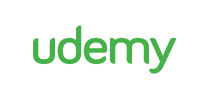جمع جزء: 139,000 تومان
- × 1 عدد: Unreal Engine 5 Create RPG Mobile Game For Play Store - 139,000 تومان
Extend the Power Platform using code. For people who have already studied for the PL-100 and PL-200 exams. For PL-400
در این روش نیاز به افزودن محصول به سبد خرید و تکمیل اطلاعات نیست و شما پس از وارد کردن ایمیل خود و طی کردن مراحل پرداخت لینک های دریافت محصولات را در ایمیل خود دریافت خواهید کرد.


PL-100: Microsoft Power Platform Apps Maker

DP-900: Microsoft Azure Data Fundamentals (Aug 2022 version)

Microsoft Applied Skills: Azure Files and Azure Blob Storage

Microsoft Applied Skills: processes using Power Automate

Excel in Microsoft Excel 1: beginner to Excel intermediate

AZ-900: Microsoft Azure Fundamentals (October 2022 version)

SQL Server Essentials in an hour: The SELECT statement

Excel in Microsoft Excel 2: Intermediate to Expert advanced

MO-100 Word, MO-200 Excel, MO-300 PowerPoint certifications

Microsoft Excel: Pivot Tables, Power Query, Power Pivot/DAX
✨ تا ۷۰% تخفیف با شارژ کیف پول 🎁
مشاهده پلن ها